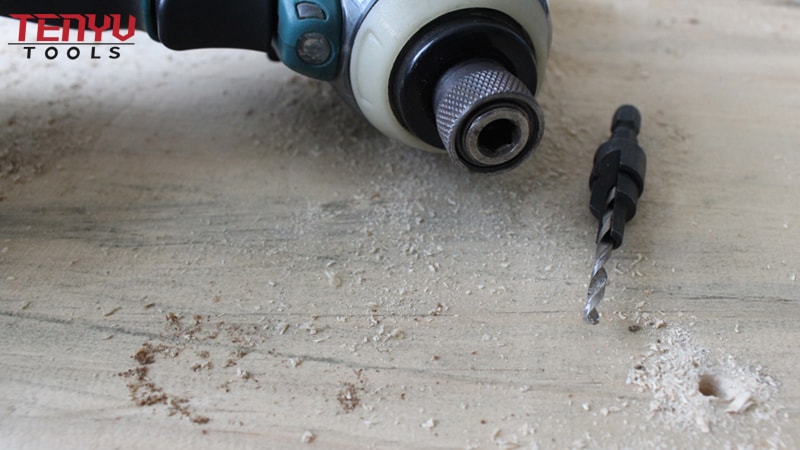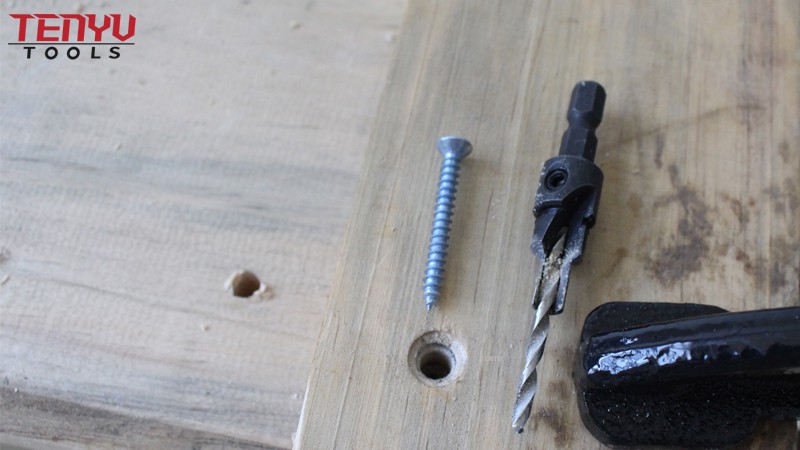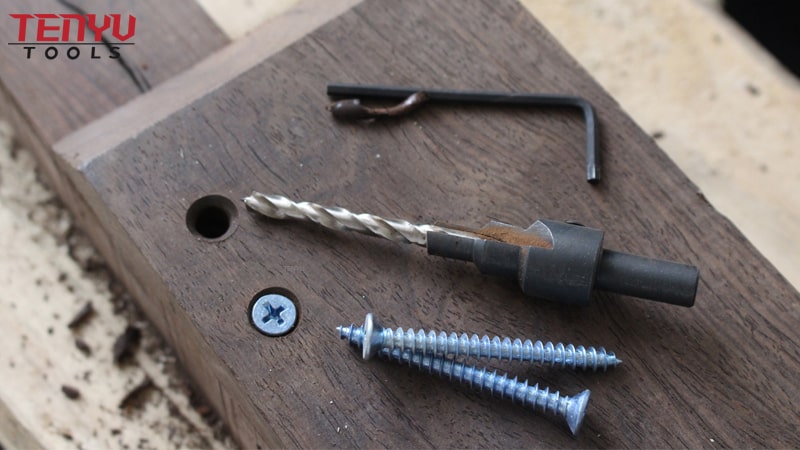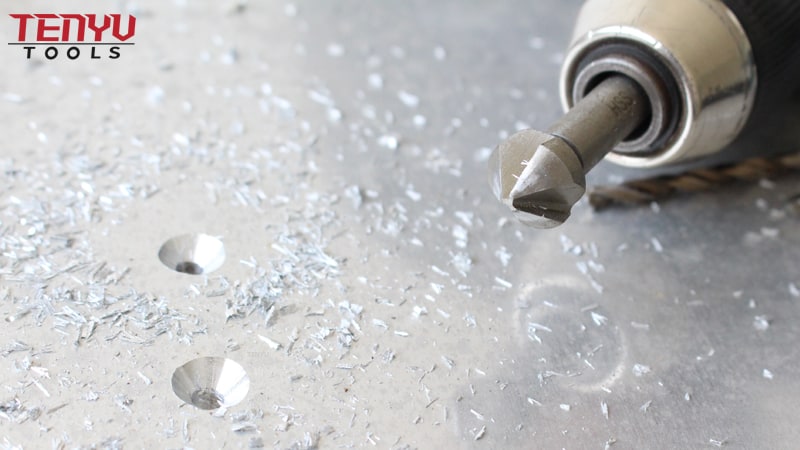How Do I Choose a Countersink Bit?
When it comes to the best countersink bits, the best way to choose is to start by measuring the diameter of the hole. This will provide you with an accurate starting point for your search.
As a good guideline, pick a countersink bit that is 50% larger than the hole size. For example, if you have a bolt size of 10mm then your best bet would be to go with a countersink bit of 15mm.
This general rule can help ensure that your best countersink bits are reliable and remain functional for longer periods of time.

How Fast Should a Countersink Run?
When it comes to practices for best countersink bits adjustable speed settings can be the best choice.
Running a countersink at a slower speed (25% of drill equivalent speed) helps reduce heat build-up and therefore reduces the chance of burning or damage to the best countersink bits.
To maintain accuracy and get the best performance from the bits, keep the feed rate per rotation consistent with an equivalent-sized drill regardless of cutting speed.
Proper lubrication is also essential for the best results when countersinking.

What are the Different Types of Countersink Bits?
Countersinks are necessary accessories for many tasks, and the best countersink bits come in a variety of styles.
Fixed countersinks are the least adjustable type; they cannot be moved or changed and require exact measurements when being employed.
Collard countersinks feature a bit that can be adjusted to match the length of the screw and conveniently replaced when worn out.
Tapered countersinks, the most common type, use a v-shaped cutting tip while flat countersinks contain a flat tip to best fit flat screw heads.
With knowledge of these types, one is well equipped to select the best countersink bits for their project.
How Deep Should you Countersink?
When embarking on any project that involves softwood, be sure to choose the best countersink bits that produce holes shallow enough to match the height of the screw head.
This is because less-dense wood species will compact when the pressure from the screw is applied, allowing the head to sink and seat properly.
Selecting the best countersink bits with attention to these specifics can help ensure the successful completion of your project.

Do I Need a Special Bit to Countersink?
Countersinking is a process in woodworking and construction that involves drilling a hole that’s cone-shaped and slightly larger than the screw head, allowing the screw head to sit flush against the surface.
If you’re looking for the best countersink bits, it’s best practice to drill your pilot hole with a regular bit and then swap for an appropriate countersink bit for creating the countersink divot.
Afterward, switch your bit to one specifically suited for the screws being used and proceed accordingly.
Taking these steps will ensure optimal results when attempting any countersinking project.
What is the Most Commonly Used Countersink Tool Angle?
The best countersink bits are typically manufactured with two of the most commonly used angles—82° and 90°.
This is mainly due to their optimal blending of angle and fluted length, which reduces the amount of cutting material needed and still provides sufficient clearance for fasteners.
The 82° angle is best suited for minimal stock removal when counterboring, while the 90° angle is best used in situations where deep pressing or seating of fasteners is necessary.
Regardless of usage, choosing the best countersink bits tool angle ensures that you’ll get the best results possible.

What is a 60 Degree Countersink Used For?
The best countersink bits for a variety of projects are those with a 60-degree angle.
These tools, also known as 60-degree countersinks, are used to create conical holes in a workpiece at the same angle, allowing countersunk screws and other fasteners to be installed smoothly and securely.
Suitable for use with high-speed drill press machines, these bits offer great depth control while adding minimal tearout to wood or recycled materials. Furthermore, the best countersink bits can easily be adjusted to cut various angles into different types of materials – making them a must-have for any toolbox.
Why are Countersink Bits Tapered?
Best countersink bits with tapered tips are the best option for many drilling and screw-driving applications.
As opposed to non-tapered bits, using a tapered countersink bit is advantageous in that it allows the user to achieve optimal cutting speeds while also creating a stronger hold between screws and material.
Furthermore, when adjusting countersinks for shorter screws, a slight gap around the drill bit appears, which allows for debris collection to help keep surfaces clean.
All of this makes tapered best countersink bits an ideal choice for any project requiring these tools.
Conclusion
In conclusion, selecting the ideal countersink bit for your project is a nuanced process that requires careful consideration of various factors. Understanding the diameter of the hole, the material you are working with, and the specific requirements of your project are crucial. A general guideline is to choose a countersink bit that is 50% larger than the hole size, ensuring reliability and longevity.
The speed at which you run the countersink bit is equally important. A slower speed helps reduce heat build-up, thereby minimizing the risk of damage. Consistent feed rate and proper lubrication are key to maintaining accuracy and achieving the best results.
The type of countersink bit—be it fixed, collared, tapered, or flat—depends on the specific needs of your project. Each type offers unique benefits, from adjustability to suitability for different screw heads. For softwood projects, selecting a bit that produces holes shallow enough to match the screw head height is essential to ensure the screw sits and seats properly.
When it comes to the tool angle, the most commonly used are 82° and 90°, each suited for different applications. The 60-degree countersink bit, on the other hand, is ideal for projects requiring smooth and secure installation of countersunk screws.
Finally, the tapered design of some countersink bits offers optimal cutting speeds and a stronger hold between screws and material, making them an excellent choice for a variety of drilling and screw-driving applications.
By considering these aspects, you can choose the most suitable countersink bit for your project, ensuring efficiency, precision, and quality in your work. Remember, the right countersink bit not only makes the job easier but also elevates the final outcome of your project.